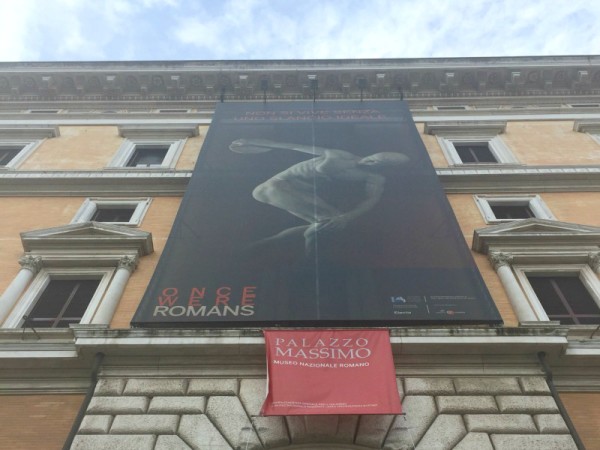I know there is just so much to see in Rome that many sites, incredible as they are, don’t often make it on to the list of must-see places. I’m as guilty myself.
I’ve lived in Rome for over a decade and it was only a few weeks ago that I visited Palazzo Massimo alle Terme. This museum on four floors is filled with treasures from Ancient Rome and while I’ve heard about how remarkable it is, for whatever reason, I’d never visited.
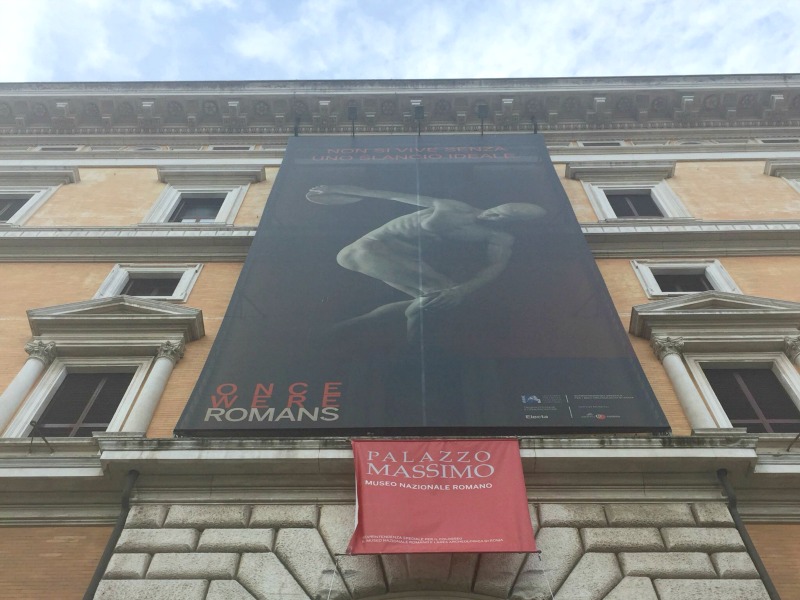
Thanks to my friend Linda from The BeeHive Hotel and Hostel, who organizes the #winterinRome event annually, I joined a guided visit to Palazzo Massimo alle Terme by Context Travel that was part of the activities.
Palazzo Massimo alle Terme
As we walked into this Neo-Renaissance style building which was once a high school until the 1960, it dawned on my husband that his father attended high school in this building. He had never been in this museum too and he’s lived here most of his life.
On a Sunday morning, it was nice to see there was a good group of people here. Far from crowded but a good energy and hint that Palazzo Massimo is starting to the attention it deserves.
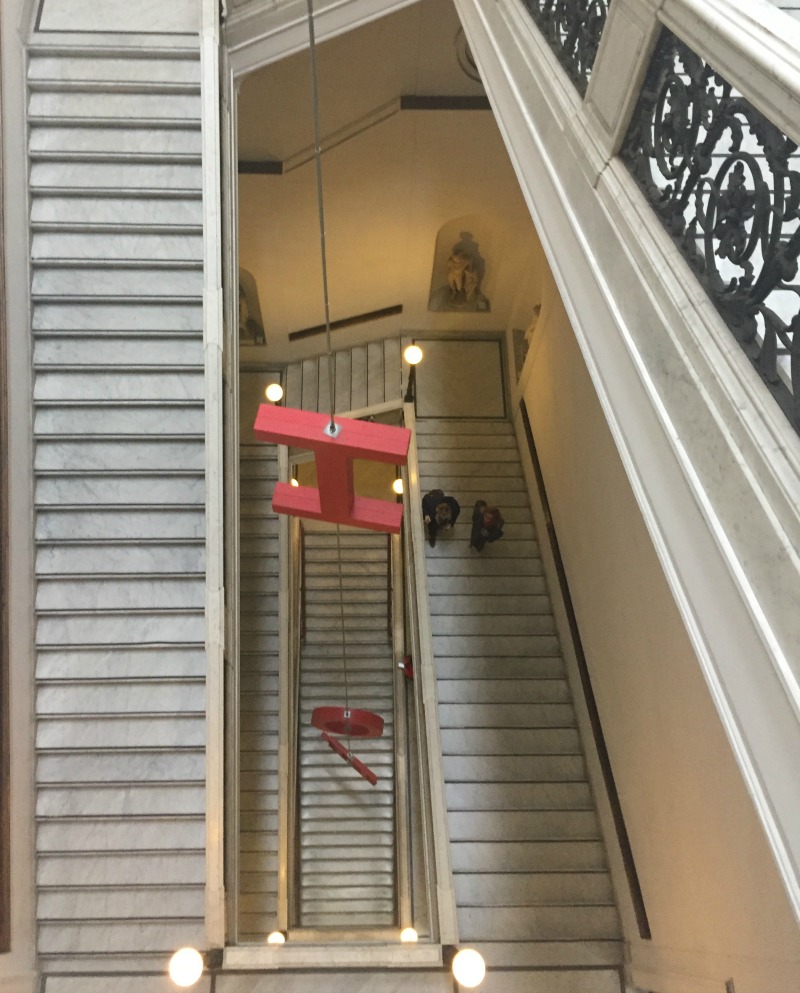
Frescoes
Our guide Patrizia, first brought us all the way up to the top, the second floor, to see one of the most renowned pieces in the museum, that of the painted garden from the dining room of the suburban Villa of Livia that dates back to 30-20 BC. The Villa was situated out of town, and the semi-subterranean room was discovered in 1863.
When they emptied the infill in the room, they discovered a remarkable painted decoration extending on all four sides with the continuous depiction of a garden. The frescoes were exposed to the elements during this period and due to their critical deteriorating condition, it was only in 1951 that the Central Institution for Restoration decided to detach them from the walls.
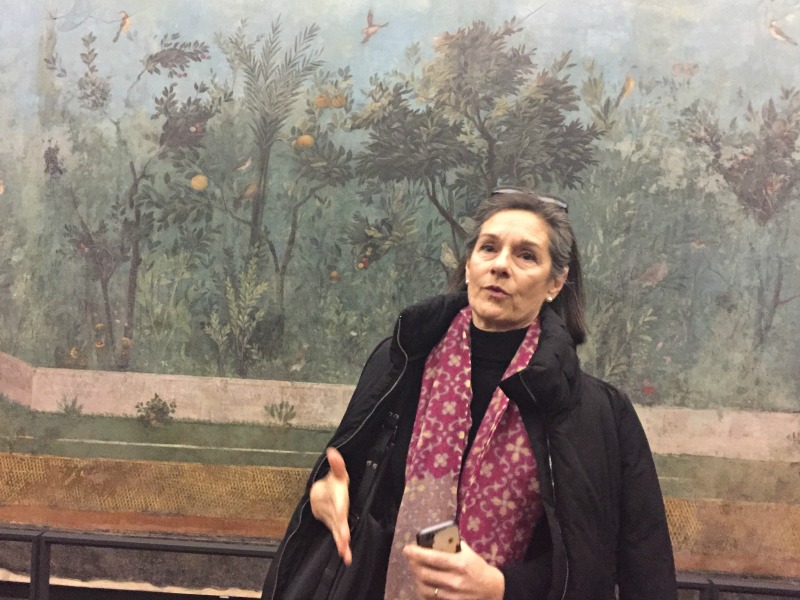
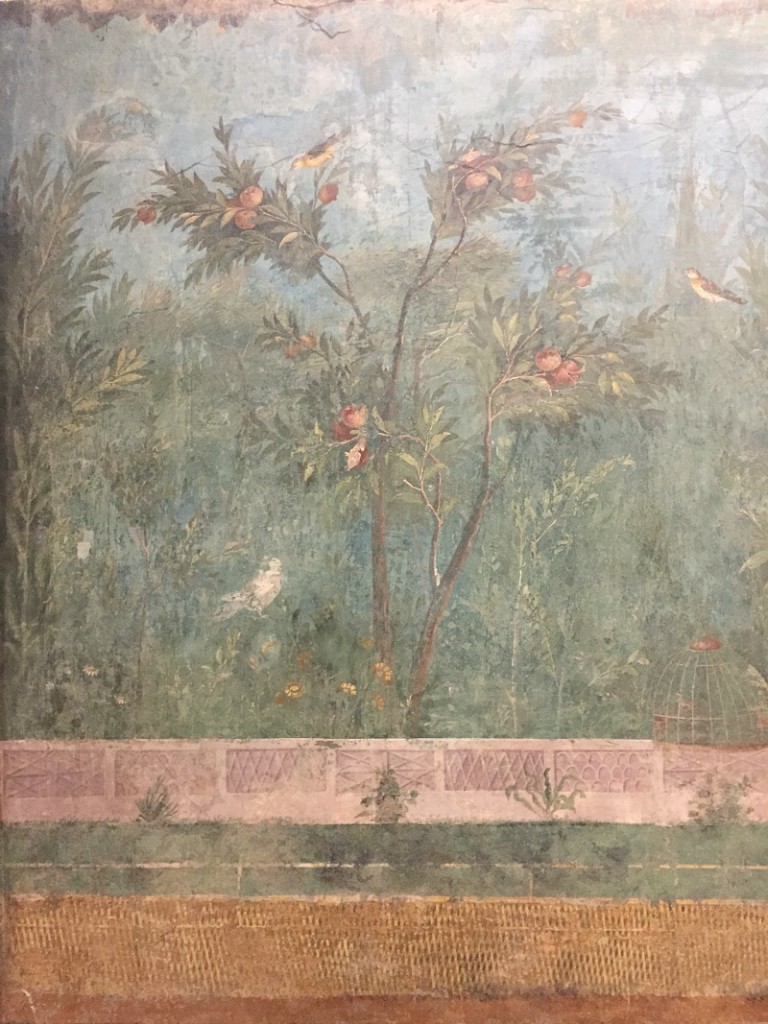
Since 1998, the painted walls have been exceptionally re-assembled in a room in Palazzo Massimo with similar dimensions to the original, giving you a real sense of what it was like. Patrizia mentioned that this was the ideal garden as all the trees and flowers of varying types were in full bloom at the same time and the details are astounding.
From there, we were led to another area on the floor to the frescoes from another Roman villa found near Villa Farnesina in Trastevere (another must-visit). While there is no evidence as to who built the villa, the comparisons with the paintings from the House of Augustus on the Palatine suggests that based on the quality of decorations, the owner was of high social standing and very probably the general Marcus Vipsanius Agrippa, a member of Augustus’ inner-circle.
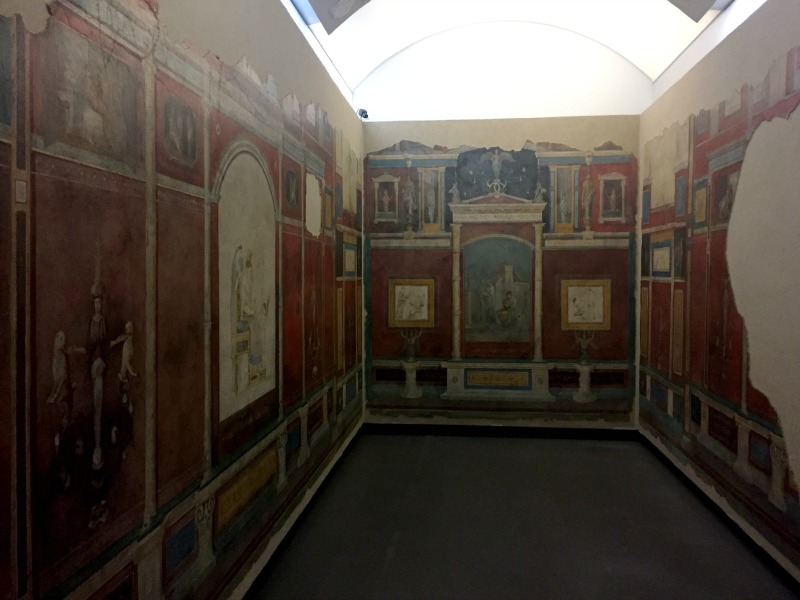
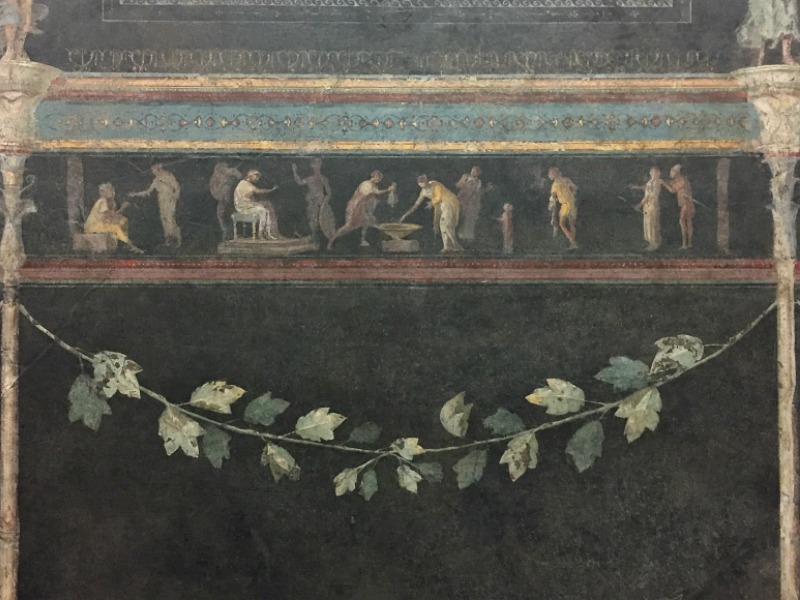
Several rooms display the vivid colors of the frescoes found but what got my attention was the black dining room, with its color implying that it was used in winter. An interesting note I read was that the black color, made from a mixture of charcoal and glue, was resistant to smoke from the fire and soot from the lamps.
And if your imagination isn’t able to bring to life what the villa could have looked like, there is an excellent 3D video that illustrates its grandeur.
Mosaics
Next up was the Roman mosaic section. I have a thing with mosaics. The intricate details, the colors and the idea that these were done by hand thousands of years ago just blow my mind. This interest was sparked after my visit to Villa Romana Casale in Piazza Armerina, Sicily and then Ravenna in Emilia-Romagna, where I had first-hand experience on the process including cutting the marble into minute pieces.
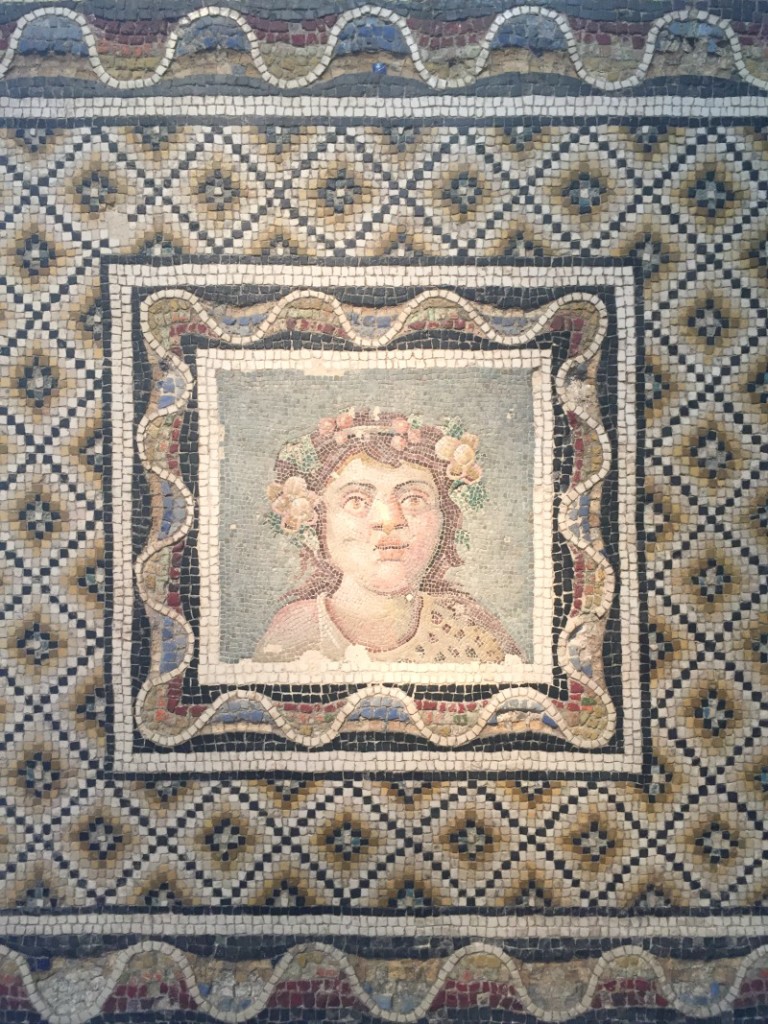
There is an extensive display of pavement mosaics from Roman villas. I have to admit that I was poring over the mosaics and mesmerized by the elaborate details that I missed most of the explanation that Patrizia shared with the group. I did catch her explanation on the use of the “emblema” which would be used to central the space and surrounded by a repetitive pattern.
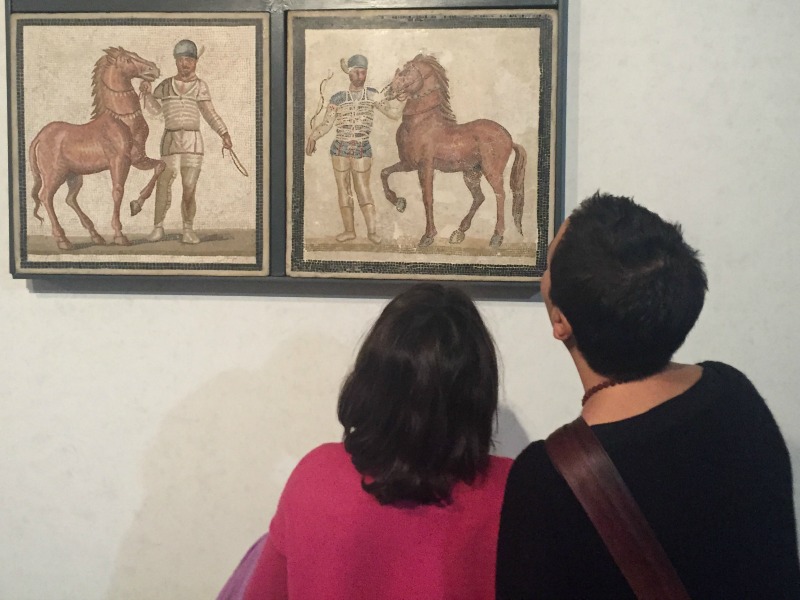
Statues and sculptures
When we came around to the statues area, Patrizia had a juicy piece of anecdote to share with us: that regarding the love triangle that involved Emperor Hadrian which ended in a tragedy. However, to balance things out, she did also share the happy marriage of Emperor Antoninus Pius with his wife Faustina Major. When she died, Antoninus Pius had requested the Senate to deify her as a goddess and a temple to be built in her honor.
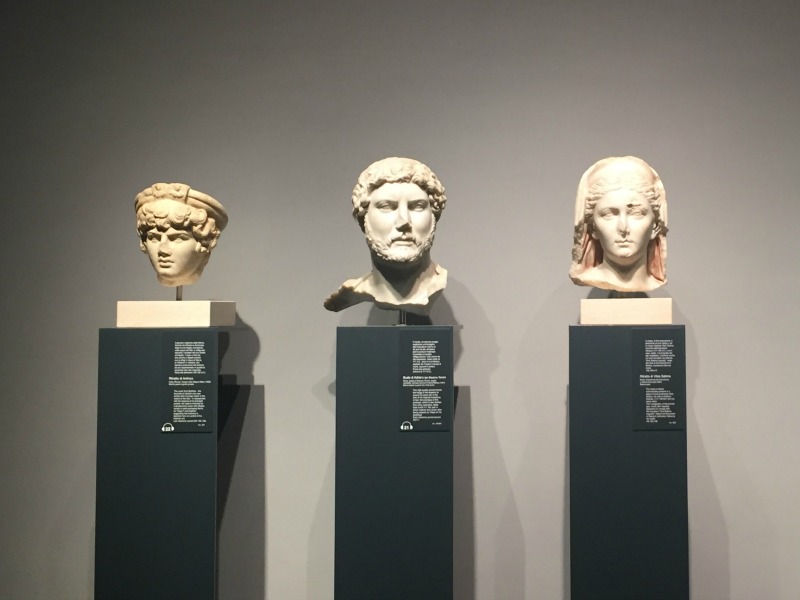
Having a knowledgeable guide sharing in-depth stories and pointing out the main works of art certainly added to the experience, especially when time is limited. As much as we tried to cover every floor, we didn’t get the chance to see the daily Roman artefacts housed in the basement such as coins, jewelry, and a mummy of a 8-year old child with her ivory doll.
However, we did get to see the Roman copy of the Discobolo Lancellotti (Discus Thrower). While I hadn’t first noticed it, Patrizia pointed out that you could tell that these marble statues are copies of bronze original because if you look closely, you will see that they have a support that looks like a tree trunk or similar.
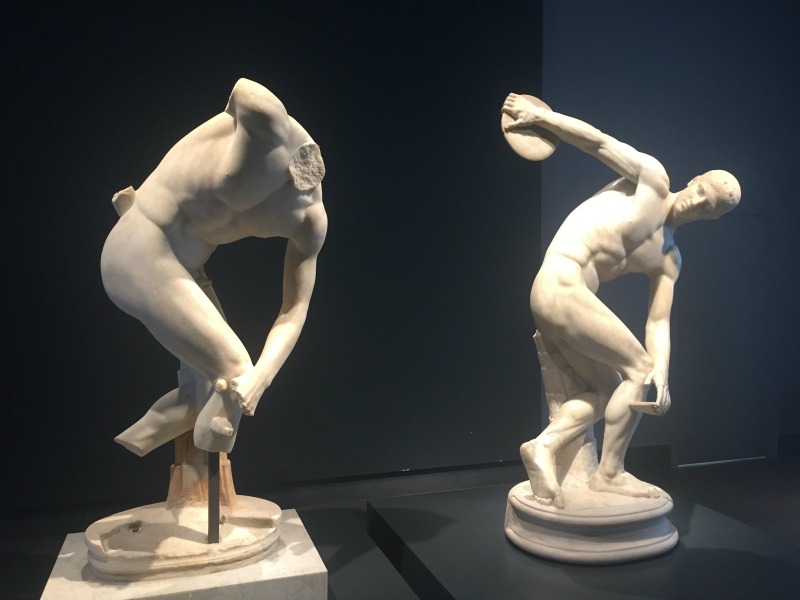
If I had thought the tour started with began on a high note, it ended with bang. The last piece we saw was the Greek Boxer at Rest (original) discovered in Rome in 1885 but that dates to between 330 to 50 BC. Patrizia had explained how the artist remarkably represented deafness with details such as the swollen ears, blocked cavity, and with his head turned and the strange expression in his face, as if he might have heard a trumpet. A striking piece.
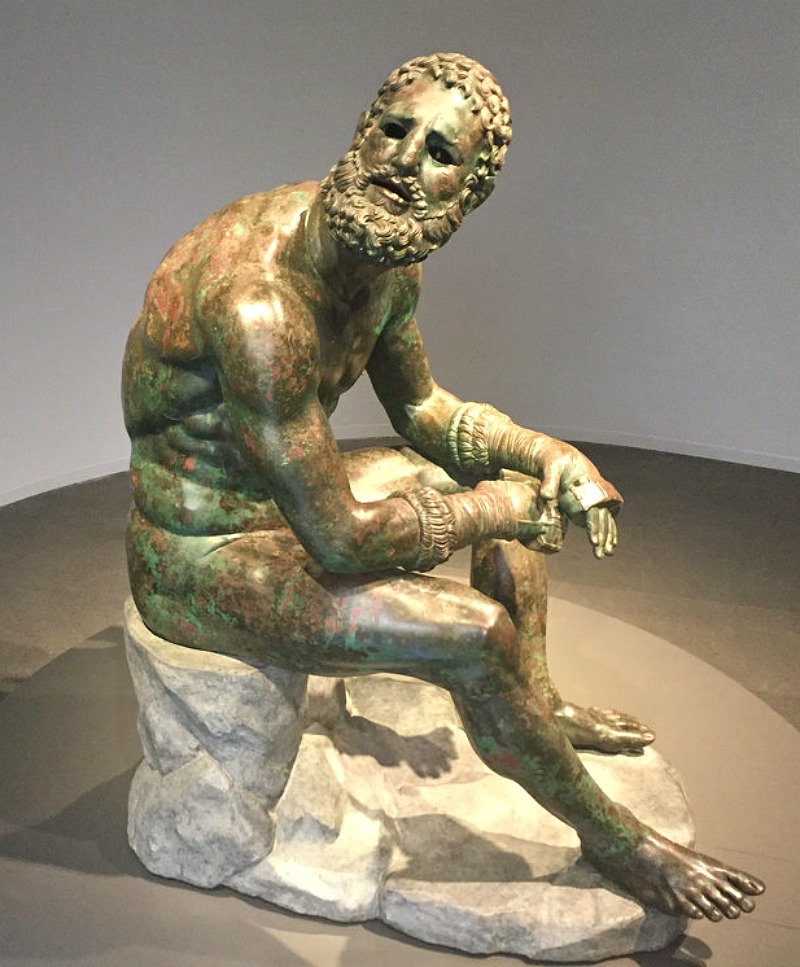
Equally incredible was how it was found during excavation work for the construction of a building on Via IV November in 1885. According to the information provided by the panel:
“…the Boxer was extracted from the subsoil, buried under a blanket of sifted earth and resting on a Doric capital which had preserved its sitting position The circumstances of these spectacular discoveries immediately seemed to suggest that the two sculptures had been deliberately hidden, although their original location in Rome is still unknown, as are the reasons that led to their burial”.
That is one fascinating story and discovery.
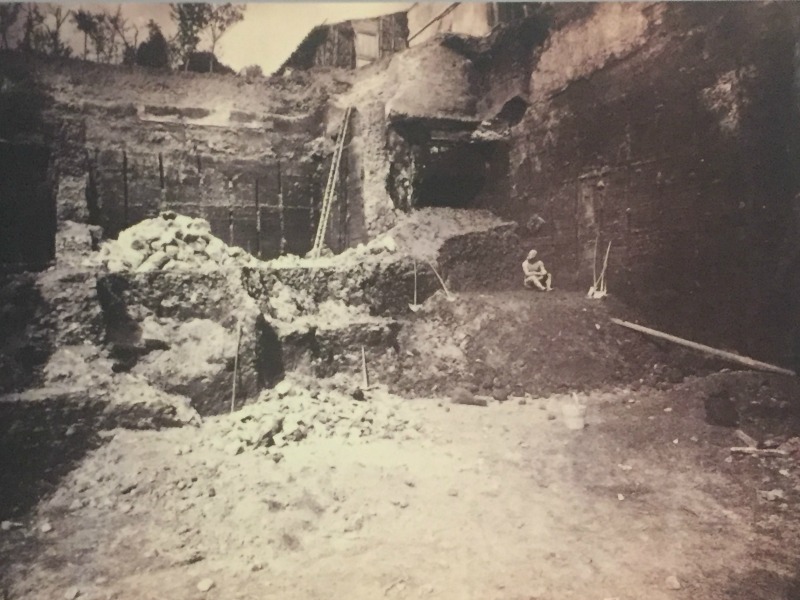
Need more reasons to visit Palazzo Massimo?
Because it’s situated between Termini Station and Piazza della Repubblica, it’s easy to reach.
And get this.
If you decide to visit Palazzo Massimo on your own, the full price of the ticket is €7 which is for 3 days at 4 sites: Palazzo Massimo, Palazzo Altemps, Crypta Balbi, Baths of Diocletian.
Because these are all fabulous sites, you are getting one heck of a deal.
But let me just say this: a visit to a museum this rich deserves a guide and with all that they share, you’ll be glad you did. It’s a totally different experience altogether.
After museum visit: lunch at Gatsby Cafe
Our romp in the museum sure worked up an appetite and we were fortunate to have Gatsby Cafè host our group for lunch. Situated just a short walk away in the Esquilino neighborhood they were the ultimate host.
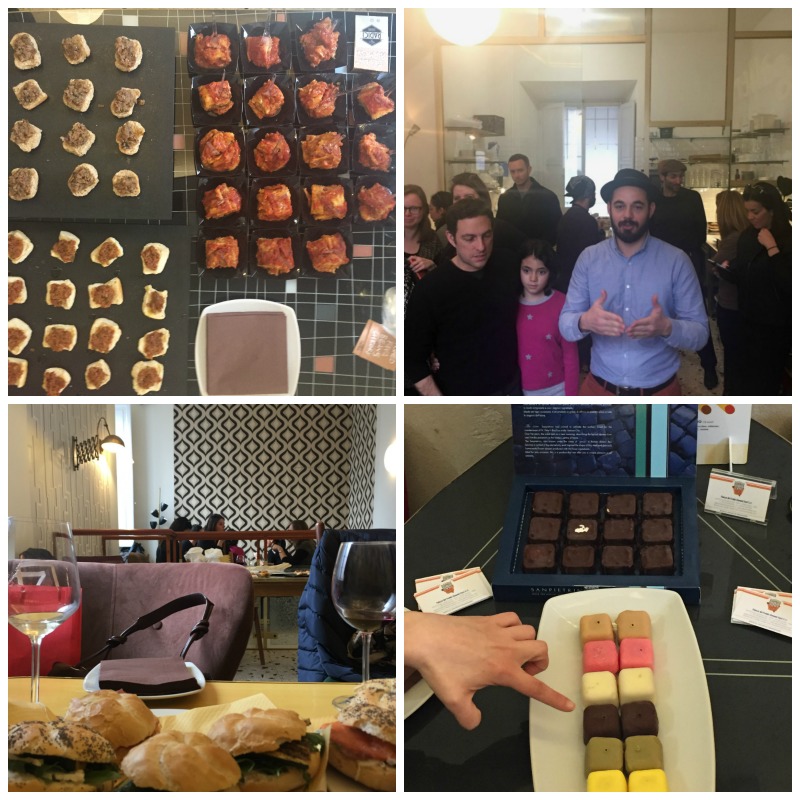
What made the lunch even more memorable was that they also invited other eateries in the neighborhood to their cafe: Radici, Panella, and Gelateria Fassi allowing us to variety of dishes and sweet treats. A wonderful atmosphere with good food, and great company sure made for a fantastic Sunday outing.
Our thanks go out to Linda, Steve and The Beehive family for organizing this brilliant #winterinRome event and for inviting us to be a part of it.
 BrowsingRome Blogging about my experiences and sharing my thoughts about Rome, Italy and beyond
BrowsingRome Blogging about my experiences and sharing my thoughts about Rome, Italy and beyond
